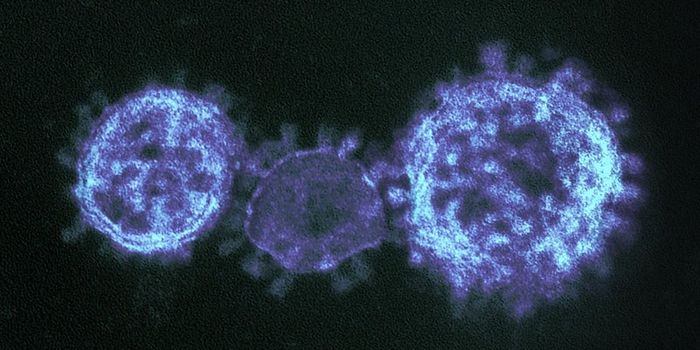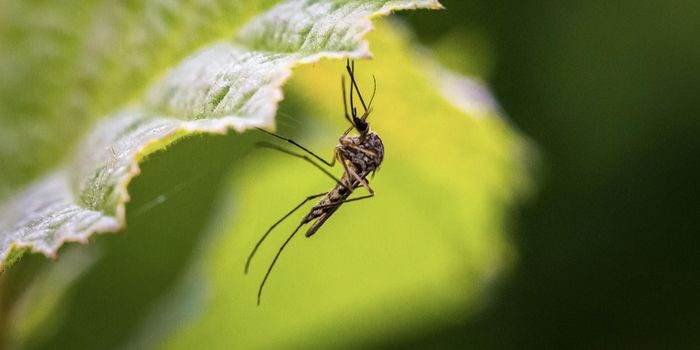You just stumbled upon the first installment of "Better Know a Microbe", a series of articles that highlights the world of quirky, underappreciated, and overworked microbes. The first genus I want to share with you is Chlorobium. Never heard of it? Me either.

Bacteria in the genus Chlorobium (also known as Chlorochromatium) are coccoid or rod-shaped "green sulfur" bacteria. These green-colored anaerobes use hydrogen sulfide as a source of electrons for photosynthesis. Chlorobium, like all green sulfur bacteria, use highly sensitive light-sensing antennae called "chlorosomes" to funnel light energy into photosynthetic reaction centers. Since sulfur is a waste product of this reaction, Chlorobium is often seen associated with particles of yellow-white sulfur under the microscope. Sulfate-reducing bacteria often cohabitate with Chlorobium and make use of its sulfur waste (more on this later).
Where can you find green sulfur bacteria like Chlorobium? They are found within the first few millimeters of sulfur-rich, oxygen-deprived mud, or nearby sulfur-rich springs just below a layer of pink-purple bacteria. They also make up the green layers within sediment in stagnant water. In all cases, they reside within the "photic zone", the zone into which light penetrates for photosynthesis.
Want to grow your very own green sulfur bacteria? The easiest method is to construct a Winogradsky column. In its simplest form, the column consists of mud from a pond, a cellulose source (like paper towels), and egg yolk or gypsum as sources of carbon and sulfur. Just provide a little sunlight and watch a microbial wonderland develop before your eyes. (Follow these links for instructions on constructing your own Winogradsky column: http://www.scientificamerican.com/article/bring-science-home-soil-column/, file:///C:/Users/2171934/Downloads/winogradsky.pdf.)
If you've made it this far into the article, you're in for a treat. The sulfur-rich ecosystem in which green sulfur bacteria such as Chlorobium lives is called a "sulfuretum". Within these sulfureta are "consortia" of non-motile green sulfur bacteria (termed "epibionts") that attach themselves to larger, motile bacteria. The larger, colorless cells are probably chemotrophs that utilize the sulfur produced by bacteria like Chlorobium. Simply, it's a win-win situation. The sulfate-reducers tote around their Chlorobium food factories, while Chlorobium gets free transportation.
Nearly 90% of green sulfur bacteria exist as epibionts, although they can be cultured outside of the consortium. On the other hand, little is known about the central cell because it cannot be cultured independently of its epibiont. However, fluorescent in situ hybridization experiments identified the central cell in Chlorochromatium aggregatum as a Betaproteobacterium of the family Comamonadaceae .
Up to 70 green sulfur bacteria can attach themselves to a single, central bacterium (see photo). The consortium moves scotophobotactically (new favorite word) towards light. Basically, the photosynthetic epibionts use their chlorosomes to sense the light, and the central cell moves the consortium towards it. If that's not cool enough, cell division between the central cell and its epibionts is coordinated, and the epibionts coordinate carbon uptake by the central cell.
While this is in no way an exhaustive description of Chlorobium, I hope it piqued your interest in this genus of green sulfur bacteria. They no doubt play a critical and often underappreciated role within numerous ecosystems.
Sources: A Field Guide to Bacteria by Betsey Dexter Dyer (Chapter 5), Crit Rev Microbiol. 2004;30(2):123-43 PMID:15239383, Environ Microbiol. 2008 Oct;10 (10): 2842-56 PMID: 18707609, J Bacteriol. 2008 May; 190 (10): 3721-30 PMID: 18344357, Photosynth Res. 2010 Jun; 104 (2-3): 245-255 PMC: 2882566, MicrobeWiki, Howard Hughes Medical Institute (file:///C:/Users/2171934/Downloads/winogradsky.pdf), Scientific American (http://www.scientificamerican.com/article/bring-science-home-soil-column/), Recent Advances in Phototrophic Prokaryotes (Chapter 2), The Dictionary of Environmental Microbiology (p. 143)









